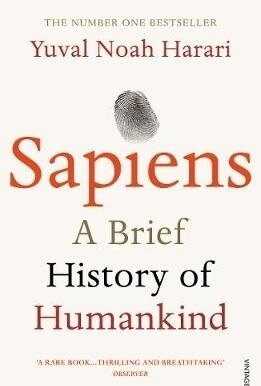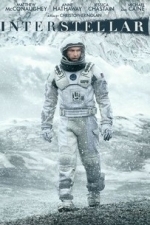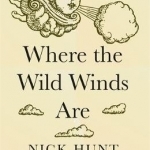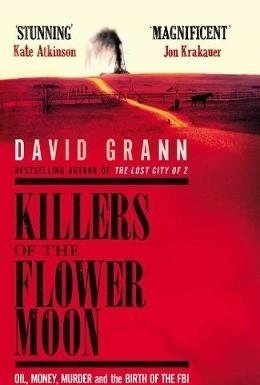Search
BookblogbyCari (345 KP) rated Sapiens: A Brief History of Humankind in Books
Aug 5, 2018
This book was chosen to be the first book read and discussed in an online non-fiction book club I recently joined – and I’m glad we did choose this one!
The book is an overview of homo-sapiens as a species, and how we have changed over the ages, and what we have done, before finally touching on where we are going. As such the book is a cross-pollination of history, sociology, and economics.
As you may expect from a book with such a broad scope, there are some sweeping statements, and rather than being a neutral dispassionate account, Harari makes his opinions very evident. However rather than being irritating, I feel this makes for a more entertaining read.
The book begins by introducing the theme of homo-sapiens in the context of the presence of the other human species that used to exist. He then goes on to describe the cognitive and agricultural revolutions. Then it’s the establishment of patriarchal social hierarchies across the world, largely based on historical conventions. Next Harari states that the purpose of religion is to unify fragile societies with superhuman legitimacy.
Harari then moves on to the scientific revolution, describing how an admission of ignorance by Europeans, along with a desire to discover and conquer new lands was key to the movement.
The conversation moves swiftly then to economics, using the fact that a bank can loan £10 for every £1 it has, to argue that our economics is based on trust in the future. Harari states that a country’s credit rating is more important than its actual resources. Harari describes capitalism and consumerism as being 2 sides of the same coin with two commandments: rich must invest, rest of us must buy. Consumerism, he says, aims to convince people that indulgence is good and frugality is self-oppression.
Harari also argues that, now, instead of relying on local communities the individual relies on the market or the state. Parental authority no longer sacred, he says, and state intervenes. And so when Harari asks if we are any happier now than when we were hunter-gatherers, he argues that our rise of wealth is offset by the disintegration of community life.
Harari also speaks of ecological degradation and our tendency to treat other species as a means to an end, for example, the farming of cow's and chickens has cut years off the lives of both, since they are killed as soon as they reach their maximum weight.
In the final chapter, Harari speculates on the future of mankind. With improvements in medical knowledge comes new ethical conundrums, he says. How will we handle the options of genetic engineering? What will the advent of artificial intelligence mean for humanity?
In my book club, we found that the book generated a lot of talking points. What would the world be like now, had the other species of humans survived? Why have so many cultures across history and the world had patriarchal hierarchies? Can societies improve over time, or is one style better than another? Can communism be considered a religion? Are human rights really just a figment of our collective imagination?
Whilst not everyone in my book club enjoyed the book equally, I would say that it’s as enlightening as it is thought provoking. By the end, it was hard to argue with the author's conclusion that homo-sapiens are like dissatisfied and irresponsible gods.
The book is an overview of homo-sapiens as a species, and how we have changed over the ages, and what we have done, before finally touching on where we are going. As such the book is a cross-pollination of history, sociology, and economics.
As you may expect from a book with such a broad scope, there are some sweeping statements, and rather than being a neutral dispassionate account, Harari makes his opinions very evident. However rather than being irritating, I feel this makes for a more entertaining read.
The book begins by introducing the theme of homo-sapiens in the context of the presence of the other human species that used to exist. He then goes on to describe the cognitive and agricultural revolutions. Then it’s the establishment of patriarchal social hierarchies across the world, largely based on historical conventions. Next Harari states that the purpose of religion is to unify fragile societies with superhuman legitimacy.
Harari then moves on to the scientific revolution, describing how an admission of ignorance by Europeans, along with a desire to discover and conquer new lands was key to the movement.
The conversation moves swiftly then to economics, using the fact that a bank can loan £10 for every £1 it has, to argue that our economics is based on trust in the future. Harari states that a country’s credit rating is more important than its actual resources. Harari describes capitalism and consumerism as being 2 sides of the same coin with two commandments: rich must invest, rest of us must buy. Consumerism, he says, aims to convince people that indulgence is good and frugality is self-oppression.
Harari also argues that, now, instead of relying on local communities the individual relies on the market or the state. Parental authority no longer sacred, he says, and state intervenes. And so when Harari asks if we are any happier now than when we were hunter-gatherers, he argues that our rise of wealth is offset by the disintegration of community life.
Harari also speaks of ecological degradation and our tendency to treat other species as a means to an end, for example, the farming of cow's and chickens has cut years off the lives of both, since they are killed as soon as they reach their maximum weight.
In the final chapter, Harari speculates on the future of mankind. With improvements in medical knowledge comes new ethical conundrums, he says. How will we handle the options of genetic engineering? What will the advent of artificial intelligence mean for humanity?
In my book club, we found that the book generated a lot of talking points. What would the world be like now, had the other species of humans survived? Why have so many cultures across history and the world had patriarchal hierarchies? Can societies improve over time, or is one style better than another? Can communism be considered a religion? Are human rights really just a figment of our collective imagination?
Whilst not everyone in my book club enjoyed the book equally, I would say that it’s as enlightening as it is thought provoking. By the end, it was hard to argue with the author's conclusion that homo-sapiens are like dissatisfied and irresponsible gods.
BankofMarquis (1832 KP) rated Interstellar (2014) in Movies
Aug 9, 2018
Another top notch cinematic experience by the best director of our time
2014's INTERSTELLAR is one of Christopher Nolan's most ambitious works - and that is saying alot. It also is one of his best. Nolan - and his brother, the screenwriter of this film, Jonathan Nolan - wanted to make a "real" science fiction film, with the emphasis on the science, so they enlisted the help of noted theoretical physicist, Dr. Kip Thorne to ensure that they were not violating any established physical laws and that all speculations would spring from science and not fantasy.
And, for the most part, they succeed.
Following the adventures of "everyman" Cooper (if you call a farmer who is also a top notch astronaut, pilot and engineer an everyman), Interstellar tells of an Earth of the not-too-distant future that is running out of food and mankind must find a new planet to inhabit or else face extinction. Talked into leaving his family and heading into space, Cooper must face the challenges of his mission while fighting the emotions of leaving his family behind on a dying world.
As Cooper, Matthew McConaughey (at the height of his "McConnaissance") is perfectly cast as this "everyman". He brings the right balance of charisma, heroism, emotional maturity, intelligence and a "down to earth" behavior that has us rooting for him from the start. His acting is at the highest level and is matched, beat by beat by Jessica Chastain and (surprisingly to me at the time) Anne Hathaway as a fellow astronaut/scientist.
The special effects, worlds, circumstances, narrow escapes and deflating defeats are all handled in typical top-notch Nolan fashion, but it is the emotional stakes - specifically between McConaughey and Chastain (as his grown up daughter) are what keeps this film "grounded" and rises it above the standard sci-fi fair.
Nolan regular Michael Caine, the always great John Lithgow, Wes Bentley, Ellen Burstyn, a "before he was famous" Timothee Chalamet, another "before he was famous" David Oyelowo, Casey Affleck and a "surprise apperance" by a very famous "A" lister (who I will not name, so as not to ruin it) are all equally as good and give the proceedings the gravitas it needs.
Special notice needs to be made of the performance of Bill Irwin as the robot TARS (all space movies need a robot, right?). He performs the puppetry of the robot (Nolan wished to do everything as "practical" as possible) and adds large doses of humanity - and humor - to this non-human.
Another bit of special notice needs to be given to frequent Nolan collaborator - the brilliant Composer Hans Zimmer. He was tasked by Nolan to create a "unique" score - one that does not rely heavily on crescendoing strings and horns - and he succeeds tremendously with a hauntingly, melodic and driving score that heightens - but never overpowers - the scenes playing on the screen.
The decision as to whether or not you like this film will hinge on your "believability" of the final chapter - one where I "went with the flow" and was all right with, but (I'm sure) others will struggle with.
All in all, another top notch film by the best director of our day. If you have never seen INTERSTELLAR - or if you haven't seen it in awhile - I suggest you check it out, you'll be glad you did.
Letter Grade: A
9 (out of 10) stars and you can take that to the Bank (ofMarquis)
And, for the most part, they succeed.
Following the adventures of "everyman" Cooper (if you call a farmer who is also a top notch astronaut, pilot and engineer an everyman), Interstellar tells of an Earth of the not-too-distant future that is running out of food and mankind must find a new planet to inhabit or else face extinction. Talked into leaving his family and heading into space, Cooper must face the challenges of his mission while fighting the emotions of leaving his family behind on a dying world.
As Cooper, Matthew McConaughey (at the height of his "McConnaissance") is perfectly cast as this "everyman". He brings the right balance of charisma, heroism, emotional maturity, intelligence and a "down to earth" behavior that has us rooting for him from the start. His acting is at the highest level and is matched, beat by beat by Jessica Chastain and (surprisingly to me at the time) Anne Hathaway as a fellow astronaut/scientist.
The special effects, worlds, circumstances, narrow escapes and deflating defeats are all handled in typical top-notch Nolan fashion, but it is the emotional stakes - specifically between McConaughey and Chastain (as his grown up daughter) are what keeps this film "grounded" and rises it above the standard sci-fi fair.
Nolan regular Michael Caine, the always great John Lithgow, Wes Bentley, Ellen Burstyn, a "before he was famous" Timothee Chalamet, another "before he was famous" David Oyelowo, Casey Affleck and a "surprise apperance" by a very famous "A" lister (who I will not name, so as not to ruin it) are all equally as good and give the proceedings the gravitas it needs.
Special notice needs to be made of the performance of Bill Irwin as the robot TARS (all space movies need a robot, right?). He performs the puppetry of the robot (Nolan wished to do everything as "practical" as possible) and adds large doses of humanity - and humor - to this non-human.
Another bit of special notice needs to be given to frequent Nolan collaborator - the brilliant Composer Hans Zimmer. He was tasked by Nolan to create a "unique" score - one that does not rely heavily on crescendoing strings and horns - and he succeeds tremendously with a hauntingly, melodic and driving score that heightens - but never overpowers - the scenes playing on the screen.
The decision as to whether or not you like this film will hinge on your "believability" of the final chapter - one where I "went with the flow" and was all right with, but (I'm sure) others will struggle with.
All in all, another top notch film by the best director of our day. If you have never seen INTERSTELLAR - or if you haven't seen it in awhile - I suggest you check it out, you'll be glad you did.
Letter Grade: A
9 (out of 10) stars and you can take that to the Bank (ofMarquis)
Phil Leader (619 KP) rated The Hitchhiker's Guide to the Galaxy in Books
Nov 14, 2019
What can be said about Douglas Adams' freewheeling science fiction comedy that hasn't been said before? Probably nothing but that doesn't mean it doesn't deserve a review.
I first came to the Hitchhiker's Guide series through this book. It was about 1981 I suppose and it was recommended by a school friend. I hadn't been aware of the radio series (although as luck would have it it was repeated on BBC Radio 4 within a few weeks) and it was a little while before the television adaptation appeared (which for all its faults - mainly a lack of budget - stayed true to the spirit of the books and the radio series rather more successfully than the film).
From the point I opened this and started reading I couldn't get enough Hitchhiker's Guide. Adams' style is so much like a swan on a lake - it all seems effortless on the surface but underneath there's a lot going on. As Adams' friend John Lloyd has commented, he had the ability to write backwards, so he would start with several pages of (what to other people would be) excellent material and after a couple of days' furious writing it would be down to 2 pages, but each sentence a carefully crafted gem. The result is like the difference between beer and vodka. You will enjoy drinking the beer but the distilled and concentrated vodka will knock you out.
There is real genius in the wit, ideas seemingly being pulled from nowhere and taking on a whole new aspect (towels for example). Delightful non-sequitors (especially from aliens who turn out to be pretty ordinary - or frequently less than ordinary), brilliant and inventive word play and sheer imagination and brio run through every page, all joined together by delightful asides from 'the book'.
The story itself is based on the radio series of the same name which was pretty much made up as it went along, Adams following whatever idea seemed to give him the best scope for a quick gag at the time. But somehow this all works and the story is remarkably coherent (although the book does veer away from the thread of the radio series at the very end). It has been said before that it resembles Gulliver's Travels as each new world reveals new wonders (or new banalities shining a light on our own humdrum existences here on Earth).
Oh the story? The book essentially follows one Arthur Dent, a completely unremarkable and normal human being apart from two things. Firstly his house is about to be demolished to make way for a bypass, a fact he was previously unaware of. Secondly his friend Ford Prefect (the book explains the name) is not from Guildford after all but from a small planet somewhere in the vicinity of Betelgeuse. When aliens show up to demolish the whole Earth to make way for an interstellar bypass, Ford saves Arthur from certain death and reveals he is a reporter for a book called The Hitchhikers Guide To The Galaxy and he got stuck on Earth for rather a long time.
Arthur proceeds to have a rather horrible time being shot at, thrown out of spaceships, patronised and generally baffled by everything that is going on around him. But The Hitchhikers Guide To The Galaxy is always on hand to try to explain things.
Incredibly amusing, brilliantly written and ultimately quoteable this not just a good book, it is something that really everyone should read.
I first came to the Hitchhiker's Guide series through this book. It was about 1981 I suppose and it was recommended by a school friend. I hadn't been aware of the radio series (although as luck would have it it was repeated on BBC Radio 4 within a few weeks) and it was a little while before the television adaptation appeared (which for all its faults - mainly a lack of budget - stayed true to the spirit of the books and the radio series rather more successfully than the film).
From the point I opened this and started reading I couldn't get enough Hitchhiker's Guide. Adams' style is so much like a swan on a lake - it all seems effortless on the surface but underneath there's a lot going on. As Adams' friend John Lloyd has commented, he had the ability to write backwards, so he would start with several pages of (what to other people would be) excellent material and after a couple of days' furious writing it would be down to 2 pages, but each sentence a carefully crafted gem. The result is like the difference between beer and vodka. You will enjoy drinking the beer but the distilled and concentrated vodka will knock you out.
There is real genius in the wit, ideas seemingly being pulled from nowhere and taking on a whole new aspect (towels for example). Delightful non-sequitors (especially from aliens who turn out to be pretty ordinary - or frequently less than ordinary), brilliant and inventive word play and sheer imagination and brio run through every page, all joined together by delightful asides from 'the book'.
The story itself is based on the radio series of the same name which was pretty much made up as it went along, Adams following whatever idea seemed to give him the best scope for a quick gag at the time. But somehow this all works and the story is remarkably coherent (although the book does veer away from the thread of the radio series at the very end). It has been said before that it resembles Gulliver's Travels as each new world reveals new wonders (or new banalities shining a light on our own humdrum existences here on Earth).
Oh the story? The book essentially follows one Arthur Dent, a completely unremarkable and normal human being apart from two things. Firstly his house is about to be demolished to make way for a bypass, a fact he was previously unaware of. Secondly his friend Ford Prefect (the book explains the name) is not from Guildford after all but from a small planet somewhere in the vicinity of Betelgeuse. When aliens show up to demolish the whole Earth to make way for an interstellar bypass, Ford saves Arthur from certain death and reveals he is a reporter for a book called The Hitchhikers Guide To The Galaxy and he got stuck on Earth for rather a long time.
Arthur proceeds to have a rather horrible time being shot at, thrown out of spaceships, patronised and generally baffled by everything that is going on around him. But The Hitchhikers Guide To The Galaxy is always on hand to try to explain things.
Incredibly amusing, brilliantly written and ultimately quoteable this not just a good book, it is something that really everyone should read.

Koober - apprenez, progressez
Book and Productivity
App
Avec Koober, vous accédez à des centaines de résumés des meilleurs livres de non fiction :...
Hazel (1853 KP) rated Where the Wild Winds are: Walking Europe's Winds from the Pennines to Provence in Books
Sep 26, 2017
Fantastic, beautifully written book
I received this book for free through Goodreads First Reads.
From the moment the great storm of 1987 almost blew six-year-old Nick Hunt away, he has had the urge to travel. So many travel books are on the market, it is difficult to produce something new and exciting, but after coming across an interesting map of Europe, Hunt was determined to go on a journey that not many have attempted before. With a map listing the named winds of Europe, Hunt sets off on a quixotic quest to follow the winds.
Beginning in the Pennine Mountains, Nick Hunt takes the reader on a personal journey through the continent as he explores the towns and valleys the winds flow through whilst hoping the elusive tempests will occur so that he can experience them himself. With a mix of euphoria and disappointment, Hunt details his arduous journey providing additional knowledge along the way.
Some winds are more evanescent than others – one, discouragingly, not appearing at all – whereas one is so strong, Hunt witnesses a waterfall being blown upwards. Ignoring the warnings of the locals, Hunt, dead set on completing what he intended to do, takes us on a long walk from Italy to Croatia, a trek through the Alpine valleys of Switzerland, and a final expedition to the south of France.
Wind may seem like an odd topic to write a book about, but the Helm, Bora, Foehn and Mistral are no ordinary breezes. Their violence makes Hunt’s journey a dangerous and daring endeavour and is full of stories about past disasters that have occurred as a result of the strong, temperamental weather.
As well as teaching us about these four winds, Nick Hunt has collected facts and stories about the general areas he passes through. Personal stories of the inhabitants break up Hunt’s narrative, however, myths, legends, history and superstitions frequent the lengthy chapters as much as the winds themselves.
Giving wind a name provides it with a personality, as though it is something tangible that can be met and observed. Nick Hunt notes that artists such as Turner and Constable were interested in the weather and fascinated by the effects the wind had on the surrounding landscape. Another artist that was affected by the weather was Vincent Van Gogh - some of his paintings took place in France in the midst of the powerful Mistral. Just as the wind can be seen in his starry night skies, the scenery in France is evocative of a Van Gogh painting.
The winds do not only affect the lands they blow through, they have a strong impact on the wellbeing of the inhabitants. Some experience physical symptoms such as headaches, nose bleeds, dry skin and so forth, whereas others find themselves growing irritable, depressed and confused. The author himself has the opportunity to undergo the effects of these winds. Hunt also puts forward the suggestion that Van Gogh’s deteriorating mental health was a direct consequence of residing in the path of the Mistral.
From witchcraft to the Greek god Aeolus, there are a number of theories about why these strong winds blow. There are, of course, meteorological explanations, which Hunt attempts to explain, but admits he finds it as baffling as the next person. Regardless of the reason, these winds exist and it is captivating to learn about this aspect of Europe.
Where the Wild Winds Are: Walking Europe’s Winds from the Pennines to Provence is a fantastic, beautifully written book. Nick Hunt’s narrative is so personal that it becomes more than a travel documentation or informative non-fiction. As we read, we really get a sense of the emotions and physical hardship Hunt experienced, yet, at the same time, learn so much about European culture as well as, of course, Europe’s winds. Whether or not you are interested in travelling, this book will take you on a journey you will never forget.
From the moment the great storm of 1987 almost blew six-year-old Nick Hunt away, he has had the urge to travel. So many travel books are on the market, it is difficult to produce something new and exciting, but after coming across an interesting map of Europe, Hunt was determined to go on a journey that not many have attempted before. With a map listing the named winds of Europe, Hunt sets off on a quixotic quest to follow the winds.
Beginning in the Pennine Mountains, Nick Hunt takes the reader on a personal journey through the continent as he explores the towns and valleys the winds flow through whilst hoping the elusive tempests will occur so that he can experience them himself. With a mix of euphoria and disappointment, Hunt details his arduous journey providing additional knowledge along the way.
Some winds are more evanescent than others – one, discouragingly, not appearing at all – whereas one is so strong, Hunt witnesses a waterfall being blown upwards. Ignoring the warnings of the locals, Hunt, dead set on completing what he intended to do, takes us on a long walk from Italy to Croatia, a trek through the Alpine valleys of Switzerland, and a final expedition to the south of France.
Wind may seem like an odd topic to write a book about, but the Helm, Bora, Foehn and Mistral are no ordinary breezes. Their violence makes Hunt’s journey a dangerous and daring endeavour and is full of stories about past disasters that have occurred as a result of the strong, temperamental weather.
As well as teaching us about these four winds, Nick Hunt has collected facts and stories about the general areas he passes through. Personal stories of the inhabitants break up Hunt’s narrative, however, myths, legends, history and superstitions frequent the lengthy chapters as much as the winds themselves.
Giving wind a name provides it with a personality, as though it is something tangible that can be met and observed. Nick Hunt notes that artists such as Turner and Constable were interested in the weather and fascinated by the effects the wind had on the surrounding landscape. Another artist that was affected by the weather was Vincent Van Gogh - some of his paintings took place in France in the midst of the powerful Mistral. Just as the wind can be seen in his starry night skies, the scenery in France is evocative of a Van Gogh painting.
The winds do not only affect the lands they blow through, they have a strong impact on the wellbeing of the inhabitants. Some experience physical symptoms such as headaches, nose bleeds, dry skin and so forth, whereas others find themselves growing irritable, depressed and confused. The author himself has the opportunity to undergo the effects of these winds. Hunt also puts forward the suggestion that Van Gogh’s deteriorating mental health was a direct consequence of residing in the path of the Mistral.
From witchcraft to the Greek god Aeolus, there are a number of theories about why these strong winds blow. There are, of course, meteorological explanations, which Hunt attempts to explain, but admits he finds it as baffling as the next person. Regardless of the reason, these winds exist and it is captivating to learn about this aspect of Europe.
Where the Wild Winds Are: Walking Europe’s Winds from the Pennines to Provence is a fantastic, beautifully written book. Nick Hunt’s narrative is so personal that it becomes more than a travel documentation or informative non-fiction. As we read, we really get a sense of the emotions and physical hardship Hunt experienced, yet, at the same time, learn so much about European culture as well as, of course, Europe’s winds. Whether or not you are interested in travelling, this book will take you on a journey you will never forget.
<i>I received this book for free through Goodreads First Reads.</i>
From the moment the great storm of 1987 almost blew six-year-old Nick Hunt away, he has had the urge to travel. So many travel books are on the market, it is difficult to produce something new and exciting, but after coming across an interesting map of Europe, Hunt was determined to go on a journey that not many have attempted before. With a map listing the named winds of Europe, Hunt sets off on a quixotic quest to follow the winds.
Beginning in the Pennine Mountains, Nick Hunt takes the reader on a personal journey through the continent as he explores the towns and valleys the winds flow through whilst hoping the elusive tempests will occur so that he can experience them himself. With a mix of euphoria and disappointment, Hunt details his arduous journey providing additional knowledge along the way.
Some winds are more evanescent than others – one, discouragingly, not appearing at all – whereas one is so strong, Hunt witnesses a waterfall being blown upwards. Ignoring the warnings of the locals, Hunt, dead set on completing what he intended to do, takes us on a long walk from Italy to Croatia, a trek through the Alpine valleys of Switzerland, and a final expedition to the south of France.
Wind may seem like an odd topic to write a book about, but the Helm, Bora, Foehn and Mistral are no ordinary breezes. Their violence makes Hunt’s journey a dangerous and daring endeavour and is full of stories about past disasters that have occurred as a result of the strong, temperamental weather.
As well as teaching us about these four winds, Nick Hunt has collected facts and stories about the general areas he passes through. Personal stories of the inhabitants break up Hunt’s narrative, however, myths, legends, history and superstitions frequent the lengthy chapters as much as the winds themselves.
Giving wind a name provides it with a personality, as though it is something tangible that can be met and observed. Nick Hunt notes that artists such as Turner and Constable were interested in the weather and fascinated by the effects the wind had on the surrounding landscape. Another artist that was affected by the weather was Vincent Van Gogh - some of his paintings took place in France in the midst of the powerful Mistral. Just as the wind can be seen in his starry night skies, the scenery in France is evocative of a Van Gogh painting.
The winds do not only affect the lands they blow through, they have a strong impact on the wellbeing of the inhabitants. Some experience physical symptoms such as headaches, nose bleeds, dry skin and so forth, whereas others find themselves growing irritable, depressed and confused. The author himself has the opportunity to undergo the effects of these winds. Hunt also puts forward the suggestion that Van Gogh’s deteriorating mental health was a direct consequence of residing in the path of the Mistral.
From witchcraft to the Greek god Aeolus, there are a number of theories about why these strong winds blow. There are, of course, meteorological explanations, which Hunt attempts to explain, but admits he finds it as baffling as the next person. Regardless of the reason, these winds exist and it is captivating to learn about this aspect of Europe.
<i>Where the Wild Winds Are: Walking Europe’s Winds from the Pennines to Provence</i> is a fantastic, beautifully written book. Nick Hunt’s narrative is so personal that it becomes more than a travel documentation or informative non-fiction. As we read, we really get a sense of the emotions and physical hardship Hunt experienced, yet, at the same time, learn so much about European culture as well as, of course, Europe’s winds. Whether or not you are interested in travelling, this book will take you on a journey you will never forget.
From the moment the great storm of 1987 almost blew six-year-old Nick Hunt away, he has had the urge to travel. So many travel books are on the market, it is difficult to produce something new and exciting, but after coming across an interesting map of Europe, Hunt was determined to go on a journey that not many have attempted before. With a map listing the named winds of Europe, Hunt sets off on a quixotic quest to follow the winds.
Beginning in the Pennine Mountains, Nick Hunt takes the reader on a personal journey through the continent as he explores the towns and valleys the winds flow through whilst hoping the elusive tempests will occur so that he can experience them himself. With a mix of euphoria and disappointment, Hunt details his arduous journey providing additional knowledge along the way.
Some winds are more evanescent than others – one, discouragingly, not appearing at all – whereas one is so strong, Hunt witnesses a waterfall being blown upwards. Ignoring the warnings of the locals, Hunt, dead set on completing what he intended to do, takes us on a long walk from Italy to Croatia, a trek through the Alpine valleys of Switzerland, and a final expedition to the south of France.
Wind may seem like an odd topic to write a book about, but the Helm, Bora, Foehn and Mistral are no ordinary breezes. Their violence makes Hunt’s journey a dangerous and daring endeavour and is full of stories about past disasters that have occurred as a result of the strong, temperamental weather.
As well as teaching us about these four winds, Nick Hunt has collected facts and stories about the general areas he passes through. Personal stories of the inhabitants break up Hunt’s narrative, however, myths, legends, history and superstitions frequent the lengthy chapters as much as the winds themselves.
Giving wind a name provides it with a personality, as though it is something tangible that can be met and observed. Nick Hunt notes that artists such as Turner and Constable were interested in the weather and fascinated by the effects the wind had on the surrounding landscape. Another artist that was affected by the weather was Vincent Van Gogh - some of his paintings took place in France in the midst of the powerful Mistral. Just as the wind can be seen in his starry night skies, the scenery in France is evocative of a Van Gogh painting.
The winds do not only affect the lands they blow through, they have a strong impact on the wellbeing of the inhabitants. Some experience physical symptoms such as headaches, nose bleeds, dry skin and so forth, whereas others find themselves growing irritable, depressed and confused. The author himself has the opportunity to undergo the effects of these winds. Hunt also puts forward the suggestion that Van Gogh’s deteriorating mental health was a direct consequence of residing in the path of the Mistral.
From witchcraft to the Greek god Aeolus, there are a number of theories about why these strong winds blow. There are, of course, meteorological explanations, which Hunt attempts to explain, but admits he finds it as baffling as the next person. Regardless of the reason, these winds exist and it is captivating to learn about this aspect of Europe.
<i>Where the Wild Winds Are: Walking Europe’s Winds from the Pennines to Provence</i> is a fantastic, beautifully written book. Nick Hunt’s narrative is so personal that it becomes more than a travel documentation or informative non-fiction. As we read, we really get a sense of the emotions and physical hardship Hunt experienced, yet, at the same time, learn so much about European culture as well as, of course, Europe’s winds. Whether or not you are interested in travelling, this book will take you on a journey you will never forget.
Hazel (1853 KP) rated Killers of the Flower Moon: The Osage Murder and the Birth of the FBI in Books
Dec 7, 2018
<I>I received this book for free through Goodreads First Reads.</I>
It is well known that throughout history, facts have been omitted from history books. Written accounts of events ostensibly make important figures and countries appear to be in the right, whereas reality reveals otherwise. One such exclusion is the fate of the Native Americans inhabiting the southern states at the beginning of the 1900s. Children are brought up to believe the stories that “Red Indians” are bad and the cowboys are good, but this was unlikely the case. David Grann has researched into a particular period of Native American history that most people may never have heard of.<I> Killers of the Flower Moon</I> reveals the horrors innocent people faced at the hands of perfidious criminals.
The majority of the book is written as a third person narrative, recounting the lives of some of the members of the Osage Indian Nation in Oklahoma. White people, believing themselves to be superior, had forced the natives off their homelands and onto rocky, unwanted ground. What they did not anticipate, however, was the abundance of oil residing beneath the surface. The Osage went from being oppressed to being the wealthiest people in the state. Full of avarice, the whites were not going to let them get away with this fortune for long.
David Grann takes a particular interest in Mollie Burkhart, an Osage member with a white husband. Mollie had three sisters, but within a few short years they were all dead, and so was her mother. Believing they had been murdered, Mollie fears for her life. Other Osage members were also being killed, as well as those who tried to investigate the spreading slaughter. However, the case remained stubbornly unsolved.
Nevertheless, there was still hope for Mollie after the arrival of Tom White, an agent of the soon to be known as Federal Bureau of Investigation (FBI). Determined to get to the bottom of the so-called Reign of Terror, Tom and his team carefully analyse the behaviours and motives of the disingenuous citizens, narrowing down the suspects until eventually finding their duplicitous killer.
Learning about this unknown period of history is eye opening and offers a completely new view on the relations between whites and Native Americans. It was a time of prejudice and racism, not unlike the attitude towards black people emphasised with the civil rights movement in the mid-1900s. Greed was a significant motivator, particularly where making money was involved. But, David Grann does not stop here.
The final section of <i>Killers of the Flower Moon</i> is written from the author’s perspective. As a staff writer at <i>The New Yorker</i>, the evidence of the Osage murders case intrigued David Grann, but he was concerned about some unresolved holes in the story. Determined to uncover the truth, Grann conducted his own research to discover the culprits behind the undocumented murders unrelated to Mollie Burkhart’s family. What he stumbles on highlights the severity of the dark fate the Osage Indians were threatened with.
Despite being written as a narrative, it is obvious that <i>Killers of the Flower Moon</i> is a work of non-fiction. It lacks emotion and character insight, however, since it is not meant to be a fabricated story, these elements are not required. Instead, it shocks and disturbs the reader with its unbelievable truths.
An extensive biography proves the authenticity of David Grann’s revelation. With the reinforcement of FBI files, jury testimonials, statements, court transcripts, letters, telegrams, diaries and confessions, Grann produces a strong historical record of events that should not be glossed over. Without authors and books such as <i>Killers of the Flower Moon</i>, people will blindly go around believing falsehoods. The truth needs to be discovered, and readers can start by reading this book.
It is well known that throughout history, facts have been omitted from history books. Written accounts of events ostensibly make important figures and countries appear to be in the right, whereas reality reveals otherwise. One such exclusion is the fate of the Native Americans inhabiting the southern states at the beginning of the 1900s. Children are brought up to believe the stories that “Red Indians” are bad and the cowboys are good, but this was unlikely the case. David Grann has researched into a particular period of Native American history that most people may never have heard of.<I> Killers of the Flower Moon</I> reveals the horrors innocent people faced at the hands of perfidious criminals.
The majority of the book is written as a third person narrative, recounting the lives of some of the members of the Osage Indian Nation in Oklahoma. White people, believing themselves to be superior, had forced the natives off their homelands and onto rocky, unwanted ground. What they did not anticipate, however, was the abundance of oil residing beneath the surface. The Osage went from being oppressed to being the wealthiest people in the state. Full of avarice, the whites were not going to let them get away with this fortune for long.
David Grann takes a particular interest in Mollie Burkhart, an Osage member with a white husband. Mollie had three sisters, but within a few short years they were all dead, and so was her mother. Believing they had been murdered, Mollie fears for her life. Other Osage members were also being killed, as well as those who tried to investigate the spreading slaughter. However, the case remained stubbornly unsolved.
Nevertheless, there was still hope for Mollie after the arrival of Tom White, an agent of the soon to be known as Federal Bureau of Investigation (FBI). Determined to get to the bottom of the so-called Reign of Terror, Tom and his team carefully analyse the behaviours and motives of the disingenuous citizens, narrowing down the suspects until eventually finding their duplicitous killer.
Learning about this unknown period of history is eye opening and offers a completely new view on the relations between whites and Native Americans. It was a time of prejudice and racism, not unlike the attitude towards black people emphasised with the civil rights movement in the mid-1900s. Greed was a significant motivator, particularly where making money was involved. But, David Grann does not stop here.
The final section of <i>Killers of the Flower Moon</i> is written from the author’s perspective. As a staff writer at <i>The New Yorker</i>, the evidence of the Osage murders case intrigued David Grann, but he was concerned about some unresolved holes in the story. Determined to uncover the truth, Grann conducted his own research to discover the culprits behind the undocumented murders unrelated to Mollie Burkhart’s family. What he stumbles on highlights the severity of the dark fate the Osage Indians were threatened with.
Despite being written as a narrative, it is obvious that <i>Killers of the Flower Moon</i> is a work of non-fiction. It lacks emotion and character insight, however, since it is not meant to be a fabricated story, these elements are not required. Instead, it shocks and disturbs the reader with its unbelievable truths.
An extensive biography proves the authenticity of David Grann’s revelation. With the reinforcement of FBI files, jury testimonials, statements, court transcripts, letters, telegrams, diaries and confessions, Grann produces a strong historical record of events that should not be glossed over. Without authors and books such as <i>Killers of the Flower Moon</i>, people will blindly go around believing falsehoods. The truth needs to be discovered, and readers can start by reading this book.

Artemis Director's Viewfinder
Photo & Video and Utilities
App
Artemis Director's Viewfinder reproduces any camera, aspect ratio and lens combination. Included is...

Artemis HD
Photo & Video and Productivity
App
THIS VERSION OF ARTEMIS IS SPECIFICALLY FOR IPAD USERS ONLY. FOR THE UNIVERSAL VERSION OF ARTEMIS...





